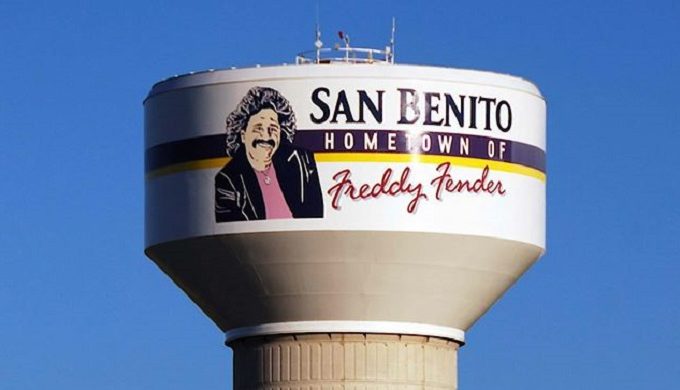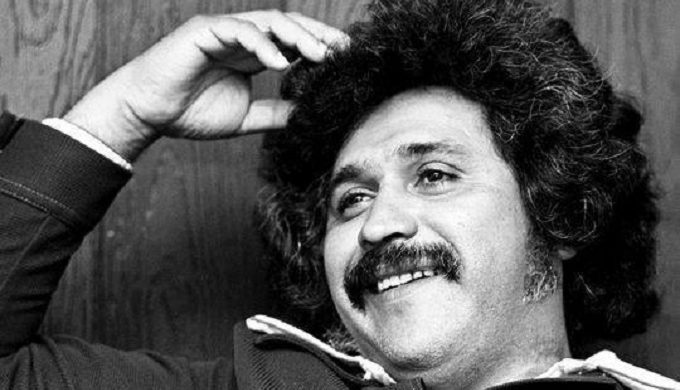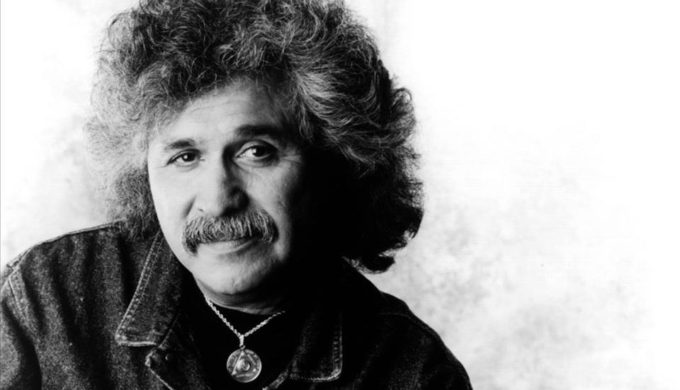Cutting the song, “Before the Next Teardrop Falls,” in 1974 in Houston, Texas, Freddy Fender sealed his reputation as one of the most successful and memorable Hispanic artists in cross-over genres to ever hit the airwaves. At the time, Fender was working full-time as a mechanic and had enrolled at Del Mar College, playing music only on weekends. This, following prior success, prison time (for possession of marijuana), and a sabbatical of sorts in New Orleans, was one of the most sensational comebacks his fans had ever witnessed and placed the Texas-born star at the top of his game as well as Billboard’s pop and country charts.
History
Freddy Fender: History-Making Hispanic Cross-Over Artist and Son of San Benito, Texas

Photo: Pinterest/Belinda Hobby
As a Hispanic and pop star in the late 1950s, a country music star in the 1970s, and a member of the Texas Tornadoes in the 1990’s, Fender’s musical career spanned decades, attracted fans of many generations, and still continues to be played on radio airwaves, at festivals, dances, and weddings. His appeal began as a young Tejano-conjunto-Tex-Mex artist, and by 1947, at the age of 10, he made his very first radio appearance on KGBT in Harlingen, singing “Paloma Querida” – a subsequent performance of which won him a tub of food valued at $10 (at the time) for first prize in an amateur talent contest.

Photo: Facebook/Rudy Mendez
Born Baldemar Huerta in San Benito, Fender’s parents were migrant workers in Texas, and he traveled and worked with them throughout their work seasons. This was also where he was first exposed to the blues music genre, as many of his coworkers were of a quality that so impressed the young talent. Consequently, it featured greatly throughout his future works and in his unique style. At the age of 16, he joined the Marines, and after his discharge at 19, began playing the honky tonks and dance halls of Texas.

Photo: Pinterest/Hector Gallegos
By 1957, Fender’s first taste of fame came with two of his records on the Falcon Records label going to number one in South America and Mexico. And in 1959, Imperial Records of Hollywood, California called to sign him. It was at that time, in hopes of reaching a more diverse audience, he changed his name to Freddy Fender, taking his surname from the guitar company of the very same, and choosing Freddy due to its alliterative nature. Following his signing, ‘Wasted Days and Wasted Nights’ was recorded and released in 1960, becoming a national hit. Following this great success, however, an unfortunate time in his life unfolded, as he and his bass player were arrested for possession of marijuana, resulting in a short prison term.

Photo: Facebook/Gaylynn Johnson
Following this time period, Fender chose to further develop his interests in Cajun funk and rhythm & blues in Louisiana, prior to returning to San Benito, where he made some life changes, worked full time, and only pursued his musical interests on weekends. Then in 1974, after cutting “…Teardrop…,” the master was purchased and marketed by ABC-Dot, and on April 8, 1975, the song reached the top spot on Billboard’s pop and country charts. It was the first time ever an artist’s first single had reached that position on both charts, making musical industry history. His subsequent remake of “Wasted Days And Wasted Nights” followed it immediately to number one on the country music charts, as did his third and fourth releases. The comeback album had gone multi-platinum, and he was named Best Male Artist of 1975 by Billboard.

Photo: Facebook/Rick Rice
He followed up this singing success with a foray into film and TV, having a breakthrough role in Robert Redford’s “Milagro Beanfield War” in 1987. He was also the voice for successful national radio and TV ad campaigns for Miller Lite and McDonald’s, among others. He continued his career uptick into the 1990s as vocalist and guitarist for the Texas Tornados, reaching audiences and major marketplaces that had a predisposition for blues and grassroots rock, and winning his first Grammy. And in the late 1990s, he became a member of Los Super Seven, along with David Hidalgo and Cesar Rosas of Los Lobos, Flaco Jiménez, Joe Ely, Ruben Ramos, and country music singer Rick Trevino. This group went on to win a 1998 Grammy for their self-titled release under the Mexican American Performance category. In 2001, he made his final recording which was a collection of classic Mexican boleros titled “La Música de Baldemar Huerta.” This won him his third Grammy.

Photo: Facebook/Traces of Texas
Undergoing a kidney transplant in 2002 as well as a liver transplant in 2004, Fender’s health was beginning to worsen. Diagnosed with an “incurable cancer,” tumors had developed on his lungs, and by December 31, 2005, he performed his final concert and continued chemotherapy treatment. At the age of 69, he passed away from lung cancer in his home in Corpus Christi, surrounded by his family. He was interred in his hometown of San Benito where, in June of 2009, the city hosted a memorial tribute to Fender together with a headstone dedication at his grave in Memorial Park. The gravesite now also includes a replica of his star from the Hollywood Walk of Fame. Freddy Fender: America’s first cross-over artist to reach number one simultaneously in two genres; a man with a history that speaks to and through his music, and a Texas son who was proud of his roots, incorporating Spanish language into mainstream music at a time when it was unheard of.
Sources:



